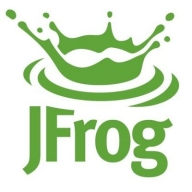

CoreOS Clair and JFrog Xray are competing products in the container security and vulnerability analysis category. CoreOS Clair seems to have the upper hand in user-friendly integration with CI/CD pipelines, while JFrog Xray stands out for its comprehensive security features despite its higher price.
Features: CoreOS Clair is praised for its effective vulnerability scanning, seamless integration with container environments, and user-friendly ease of use. JFrog Xray offers extensive security features, deep recursive scanning, compliance enforcement, and multi-layer analysis.
Room for Improvement: CoreOS Clair could enhance its reporting capabilities, expand database coverage, and improve analytics. JFrog Xray users recommend improving performance speed, better integration with third-party tools, and addressing interoperability issues.
Ease of Deployment and Customer Service: CoreOS Clair receives positive feedback for straightforward deployment and effective documentation. JFrog Xray is noted for responsive support and detailed setup guidance.
Pricing and ROI: CoreOS Clair is cost-effective with a good balance of features to price. JFrog Xray is more expensive, but the investment pays off due to its extensive capabilities, making it worth the higher cost for comprehensive security needs.
| Product | Market Share (%) |
|---|---|
| JFrog Xray | 4.0% |
| CoreOS Clair | 0.6% |
| Other | 95.4% |


| Company Size | Count |
|---|---|
| Small Business | 1 |
| Midsize Enterprise | 3 |
| Large Enterprise | 6 |
Clair is an open source project for the static analysis of vulnerabilities in appc and docker containers.
Vulnerability data is continuously imported from a known set of sources and correlated with the indexed contents of container images in order to produce lists of vulnerabilities that threaten a container. When vulnerability data changes upstream, the previous state and new state of the vulnerability along with the images they affect can be sent via webhook to a configured endpoint. All major components can be customized programmatically at compile-time without forking the project.
JFrog is on a mission to enable continuous updates through Liquid Software, empowering developers to code high-quality applications that securely flow to end-users with zero downtime. The world’s top brands such as Amazon, Facebook, Google, Netflix, Uber, VMware, and Spotify are among the 4500 companies that already depend on JFrog to manage binaries for their mission-critical applications. JFrog is a privately-held, global company, and is a proud sponsor of the Cloud Native Computing Foundation [CNCF].
If you are a team player and you care and you play to WIN, we have just the job you're looking for.
As we say at JFrog: "Once You Leap Forward You Won't Go Back!"
We monitor all Container Security reviews to prevent fraudulent reviews and keep review quality high. We do not post reviews by company employees or direct competitors. We validate each review for authenticity via cross-reference with LinkedIn, and personal follow-up with the reviewer when necessary.